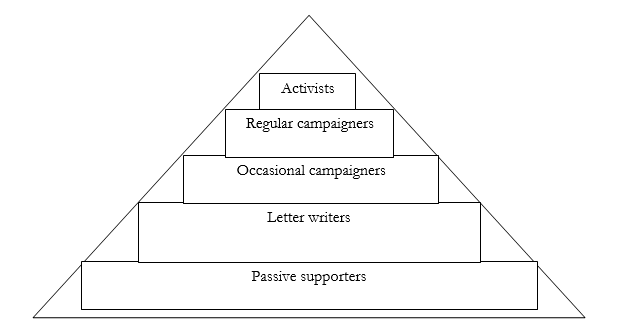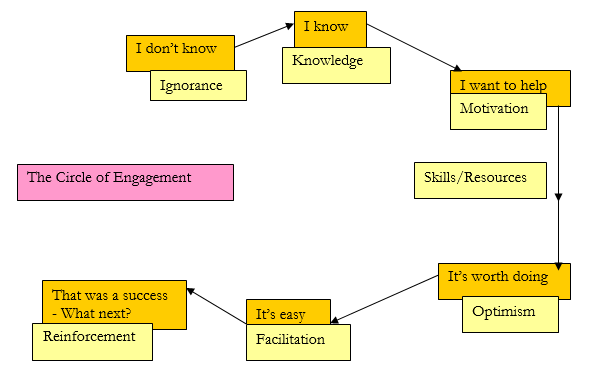
Carrying Supporters Along the Path to Social Change
From Awareness to Engagement
Involvement of Grassroots Groups
Carrying Supporters along the Path to Social Change
Supporters are important stakeholders of your organization, who should be consulted and kept informed about your organization’s work. They are also a key power base in terms of political credibility.
Proactively educating supporters about your advocacy asks can really pay dividends – not only in terms of personal change, but also in terms of aligning these important stakeholders to your organization’s advocacy aims. Whilst some will remain passive supporters, many can be nurtured and developed into allies and active supporters of your cause.
The aim is to educate and motivate your supporters, and to develop these until they participate (and give!) to their maximum potential. This is shown in diagrammatic form below:
The objective is to move your supporters as far up the pyramid as possible. This process often starts when they respond to calls for written representations. Then, if their efforts are fruitful, they begin to watch the campaign and can become enlisted as ‘agents’ who watch for associated events and media (and even use these to obtain media coverage for the issue). Then, as they become more involved in the campaign, they may be willing to take an active part in advocacy activities, where their involvement rises over time. Finally, they can become fully committed activists for the cause.
The below are useful principles to assist with this process:
- Encourage participation
- Facilitate participation
- Communicate and celebrate successes
- Communicate appreciation
- Build skills and involvement
From Awareness to Engagement
Awareness is not enough. Many people are already aware, but simply do not think the issue important enough to actively do something about it. To make a difference to people’s lives, you have to take people beyond ‘awareness’, to create a sense of urgency and need for change, and to help them to visualize a new future and empower them to play a part in the movement for change. In short, you need to engage them.
The seven-stage model for engagement is:
- Ignorance
- Knowledge
- Motivation
- Skills/Resources
- Optimism
- Facilitation
- Reinforcement
Understanding this model is essential to the development of an effective advocacy campaign.
Involvement of Grassroots Groups
You may decide to involve grassroots groups in your advocacy work. This can help to spread the advocacy campaign, and to develop their capacity in the process. There are various approaches to their involvement, and the following tool may help you to decide on the most appropriate.
|
Advocacy Tool Tool 20. Involvement of Grassroots Groups |




